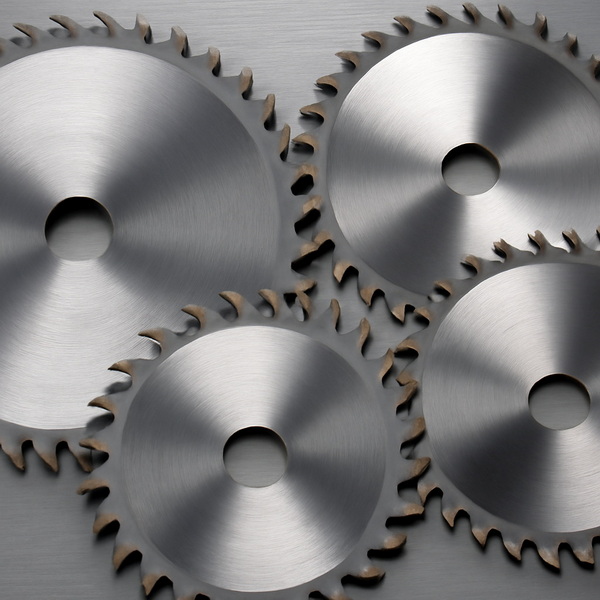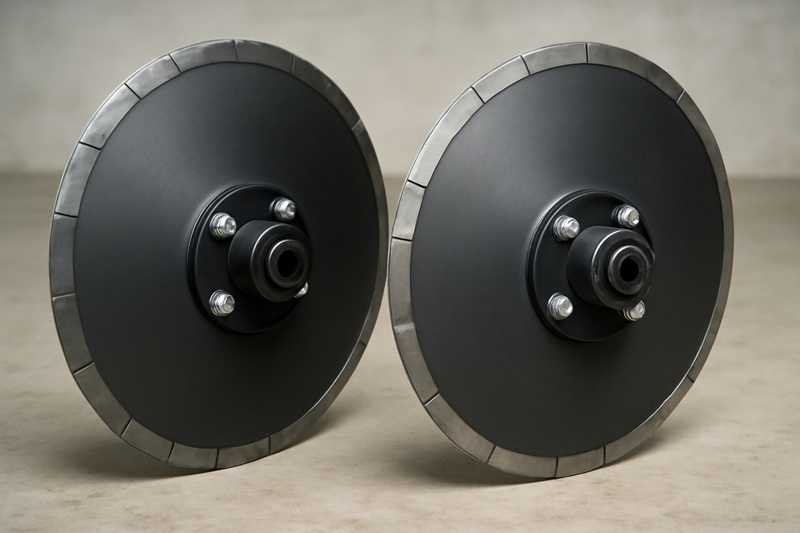Content Menu
● What is Tungsten Carbide?
>> Key Properties of Tungsten Carbide
● Natural Sources of Tungsten
>> Major Tungsten Ore Deposits
● How is Tungsten Carbide Made?
>> Raw Materials
>> Manufacturing Process
● Where Can You Find Tungsten Carbide Products?
>> Industrial Suppliers and Distributors
>> Product Forms
● Industrial Applications of Tungsten Carbide
>> Aerospace and Aviation
>> Oil and Gas Industry
>> Manufacturing and Metalworking
>> Power Generation
>> Jewelry and Consumer Goods
● Historical Context of Tungsten Carbide
● Environmental Impact and Sustainability
>> Mining Impact
>> Manufacturing Challenges
>> Recycling and Reuse
● Advances in Tungsten Carbide Technology
>> Nano-Structured Tungsten Carbide
>> Alternative Binder Metals
>> Composite Materials and Coatings
● Additional Industrial Applications
>> Medical Industry
>> Electronics and Semiconductor Manufacturing
>> Mining and Construction
● How to Care for Tungsten Carbide Products
● Future Trends
>> 3D Printing
>> Smart Coatings
>> Sustainability Focus
● Conclusion
● Frequently Asked Questions (FAQ)
>> 1. What is tungsten carbide made of?
>> 2. Where is tungsten ore mined?
>> 3. How is tungsten carbide manufactured?
>> 4. What are common uses of tungsten carbide?
>> 5. Where can I buy tungsten carbide products?
Tungsten carbide is a remarkable material known for its extreme hardness, wear resistance, and durability. It plays a critical role in numerous industrial applications, from cutting tools and mining equipment to aerospace components and jewelry. But where can you find tungsten carbide? This comprehensive article explores the origins, sources, manufacturing processes, industrial applications, environmental considerations, and future trends related to tungsten carbide, enriched with detailed explanations and illustrative images.

What is Tungsten Carbide?
Tungsten carbide is a chemical compound composed of equal parts tungsten and carbon atoms, with the formula WC. It is a fine gray powder that can be pressed and sintered into extremely hard and dense shapes. Tungsten carbide's hardness rivals that of diamonds, making it indispensable in industries requiring materials that resist abrasion, impact, and high temperatures.
Key Properties of Tungsten Carbide
- Hardness: Comparable to diamond, making it ideal for cutting and drilling tools.
- Density: Approximately 15.6 g/cm³, much denser than other carbides.
- Melting Point: Very high, around 2780–2830 °C.
- Wear Resistance: Exceptional resistance to abrasion and erosion.
- Thermal Stability: Maintains strength under extreme temperatures.
Natural Sources of Tungsten
Tungsten, the metal component of tungsten carbide, is primarily found in nature as ore minerals such as wolframite and scheelite. These ores are mined worldwide and processed to extract tungsten for further manufacturing.
Major Tungsten Ore Deposits
- Global Mining Locations: China dominates tungsten production, but significant deposits exist in Russia, Canada, Bolivia, and Portugal.
- United States: Although there is currently no active tungsten mining, historical deposits were mined in Alaska's Interior region, including the Fairbanks Mining District and Circle Mining District, where placer and hardrock tungsten minerals were found. These areas yielded high-grade tungsten ore in the early 20th century and still hold potential for future mining.
How is Tungsten Carbide Made?
Tungsten carbide is not found naturally but is synthesized through a complex industrial process starting from tungsten ore.
Raw Materials
- Tungsten Ore: Processed to produce tungsten oxide.
- Carbon Source: Graphite or carbon black.
- Binder Metals: Usually cobalt or nickel to improve toughness.
Manufacturing Process
1. Extraction and Refining: Tungsten ore is processed to produce tungsten oxide (WO₃), which is then reduced in a hydrogen atmosphere to obtain pure tungsten powder.
2. Carburization: Tungsten powder is mixed with carbon and heated at high temperatures (1400–2000 °C) in a controlled atmosphere to form tungsten carbide powder.
3. Mixing: Tungsten carbide powder is mixed with a binder metal powder (commonly cobalt) using ball milling for uniformity.
4. Compaction: The powder mixture is pressed into desired shapes under high pressure, forming a "green body."
5. Sintering: The compacted parts are heated to 1400–1600 °C to melt the binder and bond the tungsten carbide particles into a dense, solid material.
6. Machining and Finishing: After sintering, parts are machined with diamond tools and polished or coated to enhance surface properties.

Where Can You Find Tungsten Carbide Products?
Tungsten carbide is widely available in various forms for industrial and commercial use. Here are common sources and product types:
Industrial Suppliers and Distributors
- Online Metals: Offers tungsten carbide bar stock in various shapes and sizes, including flat and round bars, both ground and unground.
- Reid Supply: Provides tungsten carbide raw materials such as rods and balls with detailed specifications and next-day delivery options.
- Hard Metals Canada: Supplies shaped tungsten carbide blanks, grits, and drill blanks for tool manufacturing and refurbishment.
Product Forms
- Bars, rods, and sheets for machining and tooling.
- Inserts and tips for cutting tools and drill bits.
- Powder form for custom manufacturing and sintering.
- Coated tools and wear parts for industrial machinery.
Industrial Applications of Tungsten Carbide
Tungsten carbide's unique properties make it essential across numerous industries:
Aerospace and Aviation
Tungsten carbide coatings protect turbine blades, compressor seals, and landing gear components from wear and erosion under extreme conditions.
Oil and Gas Industry
Drill bits, valve stems, and pump components are coated or made with tungsten carbide to withstand abrasive environments and high pressures.
Manufacturing and Metalworking
Cutting tools, milling cutters, and metal forming equipment utilize tungsten carbide for extended tool life and precision machining.
Power Generation
Turbine components in steam and gas power plants use tungsten carbide coatings to resist erosion and maintain efficiency.
Jewelry and Consumer Goods
Tungsten carbide is also used for making durable and scratch-resistant jewelry such as rings and watches.
Historical Context of Tungsten Carbide
Tungsten carbide was first developed in the early 20th century as a revolutionary material for cutting tools. Its discovery transformed manufacturing and machining industries by providing tools that could cut harder materials with greater precision and durability. The development of tungsten carbide coincided with the rise of industrialization, enabling mass production and the creation of complex machinery.
The introduction of tungsten carbide tools allowed industries to machine harder metals and alloys, boosting productivity and enabling new engineering feats. Over the decades, tungsten carbide has remained the material of choice for toolmakers, continually evolving with advances in material science.
Environmental Impact and Sustainability
While tungsten carbide offers exceptional performance, its production and disposal raise environmental concerns.
Mining Impact
Mining tungsten ore involves significant land disruption, habitat destruction, and energy consumption. The extraction process can lead to soil erosion and water pollution if not managed responsibly.
Manufacturing Challenges
The production of tungsten carbide requires high-temperature processes that consume large amounts of energy. Additionally, cobalt, commonly used as a binder metal, has ethical and environmental issues associated with its mining, including concerns about labor practices and ecological damage.
Recycling and Reuse
Recycling tungsten carbide is increasingly important to reduce environmental impact. Used tools and scraps can be collected and processed to recover tungsten and cobalt, minimizing the need for new mining. This recycling loop conserves natural resources and reduces waste.
Advances in Tungsten Carbide Technology
Material science research continues to enhance tungsten carbide's properties and sustainability.
Nano-Structured Tungsten Carbide
New forms of tungsten carbide with nano-scale grain sizes exhibit even greater hardness and toughness. These materials improve tool life and performance in extreme conditions.
Alternative Binder Metals
Research is ongoing to replace cobalt with more abundant and environmentally friendly binders such as nickel or iron-based alloys, aiming to reduce ethical concerns and costs.
Composite Materials and Coatings
Tungsten carbide is increasingly used as a component in composite materials and advanced coatings that provide wear resistance while reducing weight. These innovations expand tungsten carbide's applications in aerospace, automotive, and energy sectors.
Additional Industrial Applications
Medical Industry
Tungsten carbide's biocompatibility and durability make it ideal for surgical instruments and dental tools. It enables precise cutting and drilling, improving surgical outcomes and patient safety.
Electronics and Semiconductor Manufacturing
In the high-tech electronics sector, tungsten carbide tools are used to manufacture semiconductor wafers and components. Their precision and wear resistance help achieve the fine tolerances required for modern microelectronics.
Mining and Construction
Beyond drill bits, tungsten carbide is used in wear-resistant parts for heavy machinery, such as excavator teeth, crusher components, and road milling tools. Its durability reduces downtime and maintenance costs in harsh environments.
How to Care for Tungsten Carbide Products
Proper maintenance extends the life of tungsten carbide tools and jewelry.
- Avoid Harsh Chemicals: Exposure to strong acids or bases can damage the surface.
- Regular Cleaning: Use mild soap and water to clean tools and jewelry.
- Professional Polishing: Periodic polishing restores shine and removes minor surface damage.
- Safe Storage: Store jewelry separately to avoid scratches and dings.
Future Trends
The future of tungsten carbide involves integrating it with smart materials and additive manufacturing techniques.
3D Printing
Additive manufacturing of tungsten carbide composites could revolutionize custom tool production, enabling complex geometries and rapid prototyping.
Smart Coatings
Coatings embedded with sensors may provide real-time wear monitoring, allowing predictive maintenance and reducing downtime.
Sustainability Focus
Efforts to improve recycling rates and develop eco-friendly binders will shape the tungsten carbide industry towards greater environmental responsibility.
Conclusion
Tungsten carbide is a vital material found not in nature but through sophisticated manufacturing processes starting from tungsten ore. Its exceptional hardness, wear resistance, and thermal stability make it indispensable in industries ranging from aerospace to oil drilling and manufacturing. You can find tungsten carbide products through specialized industrial suppliers offering bars, powders, and finished tools. Understanding where tungsten carbide comes from and how it is made helps appreciate its critical role in modern technology and industry. Furthermore, ongoing advances in technology and sustainability efforts promise to expand tungsten carbide's applications while minimizing environmental impact.

Frequently Asked Questions (FAQ)
1. What is tungsten carbide made of?
Tungsten carbide is composed of tungsten and carbon atoms combined to form a hard, dense compound with the formula WC. It often includes a binder metal like cobalt to enhance toughness.
2. Where is tungsten ore mined?
Tungsten ore is mined primarily in China, Russia, Canada, Bolivia, and Portugal. In the United States, historical mining occurred in Alaska, particularly around Fairbanks and the Circle Mining District.
3. How is tungsten carbide manufactured?
It is manufactured by reducing tungsten oxide to tungsten powder, mixing it with carbon, carburizing at high temperatures, mixing with a binder, compacting, sintering, and finishing through machining and coating.
4. What are common uses of tungsten carbide?
Tungsten carbide is used in cutting tools, drill bits, wear-resistant coatings, aerospace components, oil and gas drilling equipment, and even jewelry.
5. Where can I buy tungsten carbide products?
Tungsten carbide products are available from industrial suppliers such as Online Metals, Reid Supply, and Hard Metals Canada, offering bars, powders, and tool blanks.
















